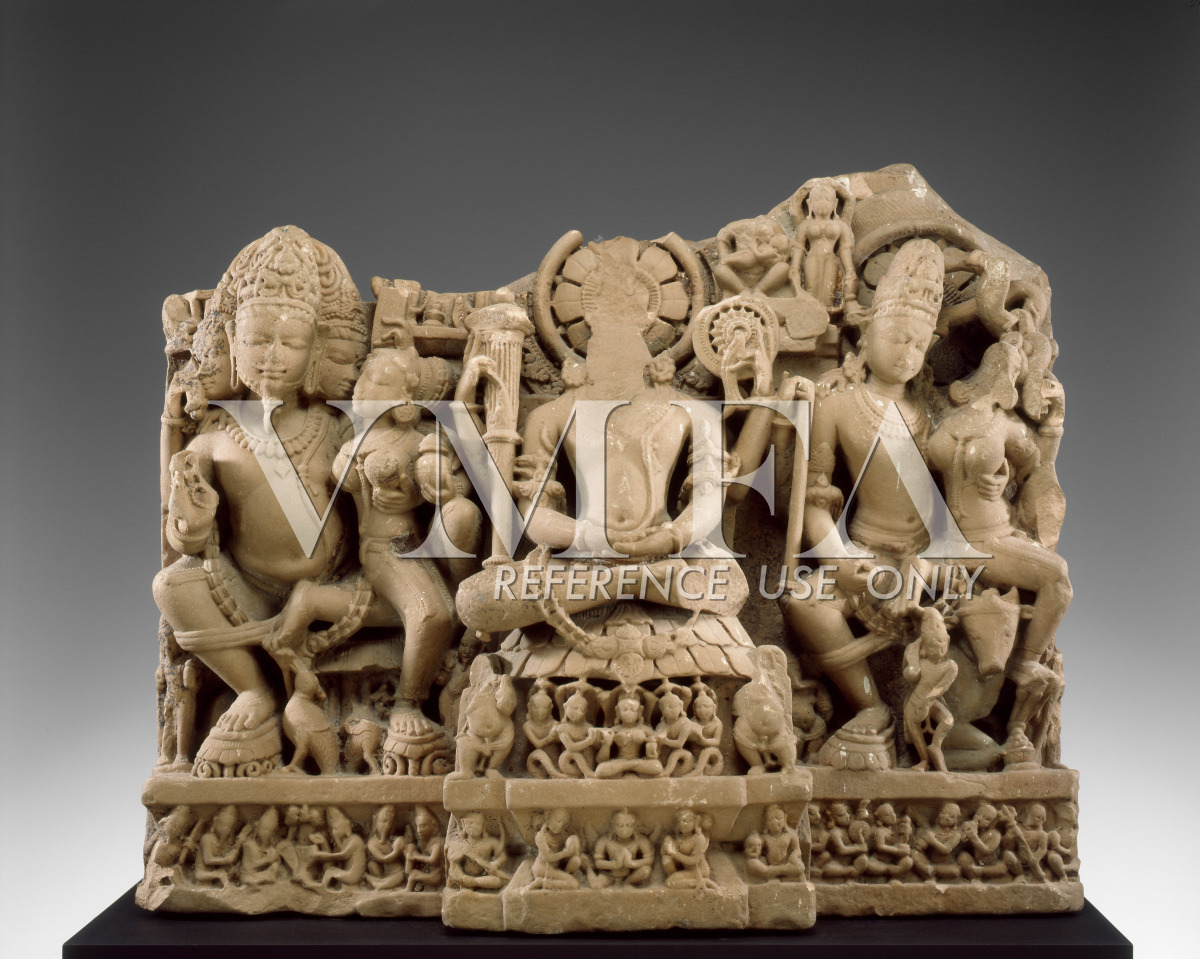
Brahma, Vishnu, and Shiva (Primary Title)
Unknown (Artist)
This exquisitely complex sculpture shows the three major gods of medieval Hinduism - Brahma, Shiva, and Vishnu - accompanied by their consorts and retinues. The figure at the center, whose face is lost, is Vishnu. Seated in meditation upon a lotus,he holds a flaming discus and a club in his two upper hands. Directly below him, on two tiers, are his consort Lakshmi and his winged mount Garuda, who are in turn attended by small figures. On the left are the four-faced god Brahma and his consort Saraswati. She rests on his bent left knee, and their extended right feet are supported by lotuses. Their goose mounts, a pair of holy men, and a group of wild ascetics join them in the bottom register. Similarly posed on the right are Shiva and Parvati, seated on Nandi, his bull mount. They are attended by three of their sons - Bhringi, Ganesha, and Karttikeya - and a group of mischievous dwarfs called ganas.
In the central position and projected forward, Vishnu is the dominant deity in this sculpture, which probably once adorned a temple dedicated to him. It is not clear, though, how it fit into this architectural context. Similar groupings of the "Hindu Trinity" often appear above sanctum doorways, but this sculpture's proportions do not seem to suit this use. This question might be more easily answered if the fragmentary upper portions were better preserved.
In the central position and projected forward, Vishnu is the dominant deity in this sculpture, which probably once adorned a temple dedicated to him. It is not clear, though, how it fit into this architectural context. Similar groupings of the "Hindu Trinity" often appear above sanctum doorways, but this sculpture's proportions do not seem to suit this use. This question might be more easily answered if the fragmentary upper portions were better preserved.
Nasli and Alice Heeramaneck Collection, Gift of Paul Mellon
Image released via Creative Commons CC-BY-NC
Some object records are not complete and do not reflect VMFA's full and current knowledge. VMFA makes routine updates as records are reviewed and enhanced.

